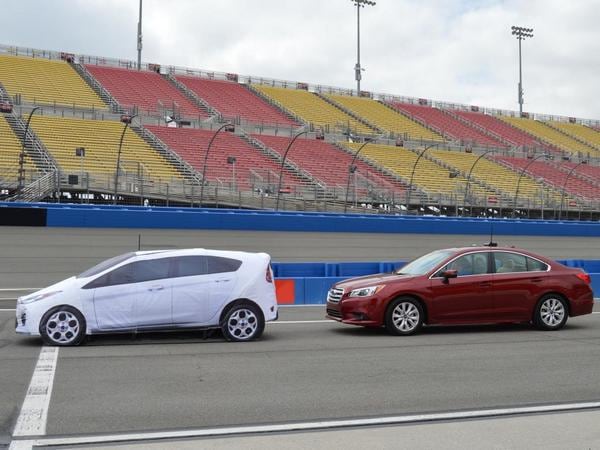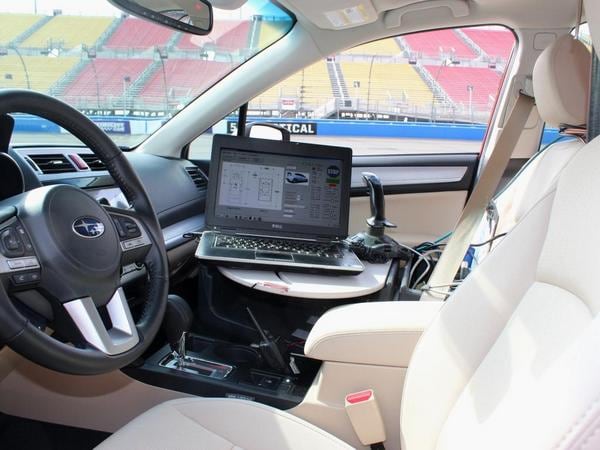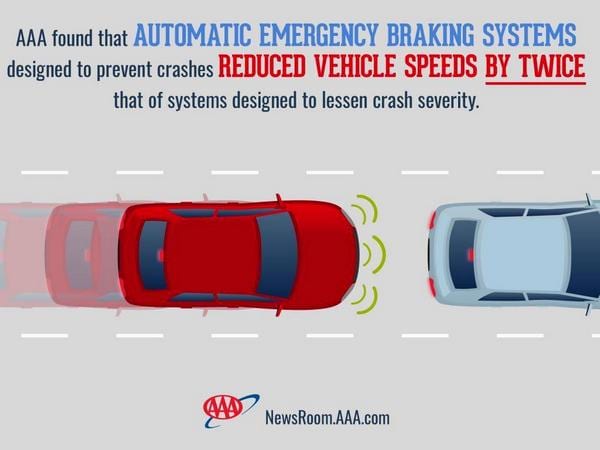The AAA recently put a number of 2016 vehicles fitted with automatic emergency braking (AEB) to a real-world test to see how well they performed. The test, which included a Honda Civic, Lincoln MKX, Subaru Legacy, Volkswagen Passat and Volvo XC90, was designed to assess the differences among systems which mitigate crash severity or avoid impacts by reducing vehicle speed. Currently AEB is standard equipment on 10 percent of all new models and optional on 53 percent. The findings, while offer interesting insights for buyers to ponder when making their next purchase.
“AAA found that two-thirds of Americans familiar with the technology believe that automatic emergency braking systems are designed to avoid crashes without driver intervention,” said John Nielsen, AAA’s managing director of Automotive Engineering and Repair. “The reality is that today’s systems vary greatly in performance, and many are not designed to stop a moving car.”
The AAA test was based around techniques used by the National Highway Traffic Safety Administration (NTHSA), the Insurance Institute for Highway Safety (IIHS) and the Alleghmeiner Deutcher Automobil‐Club (ADAC) and involved testing the vehicles approaching a static object 25 and 45 mph as well as dynamic mode where the vehicles interacted with targets moving at 20 and 30 mph. The test also included a dynamic cut-in move where a vehicle traveling at 35 mph passed another running at 30 mph. Overall, the AAA found AEB systems programmed to fully prevent impacts reduced vehicle speed twice as much (79 percent) as those only seeking to mitigate the crash (40 percent). It also discovered that when speed differentials were less than 30 mph, AEB systems intended to prevent crashes avoided collisions in 60 percent of the scenarios while that figure decreased to roughly 33 percent for mitigation-focused systems. Going beyond the actual design parameters of both and approaching a static vehicle at 45 mph, the full-avoidance AEB setups reduced speeds by 74 percent on average and prevented impacts in 40 percent of the cases while the mitigation-focused packages only trimmed speeds by 9 percent overall.
Building trust in AEB
In conjunction with its empirical evaluations, the AAA also polled 1,000 U.S. drivers 18 and over on automatic emergency braking. Among those aware of AEB technology, 68 percent expressed the belief that all systems are designed to completely stop a vehicle to avoid a collision. While 39 percent said they wanted AEB on their next vehicle — a feature that currently runs $2,775 on average as an option. Men were more likely to favor it than women by a 42-percent to 35-percent. Overall, 44 percent of those who responded claimed they were confident the systems would operate as advertised, however drivers who already owned an AEB-equipped vehicle were more likely to put their faith in AEB by a 71-percent to 41-percent margin than those who have not experienced the technology. Here, too, men led the way in trusting automatic emergency braking by a 49-percent to 40-percent count.
Also: Kelley Blue Book Best Buy Awards of 2016
In light of its findings, AAA recommends that all consumers consider automatic emergency braking systems on their next vehicle. However, Neilsen does stress that while all AEB systems are beneficial, they are not all created equal. “With the proliferation of vehicle technology, it’s more important than ever for drivers to fully understand their vehicle’s capabilities and limitations before driving off the dealer lot.”
More Safety Technology News…
Our 5 Favorite New-Car Safety Features
Automatic braking to become nearly standard by 2022
Jaguar Land Rover developing autonomous off-road driving tech










